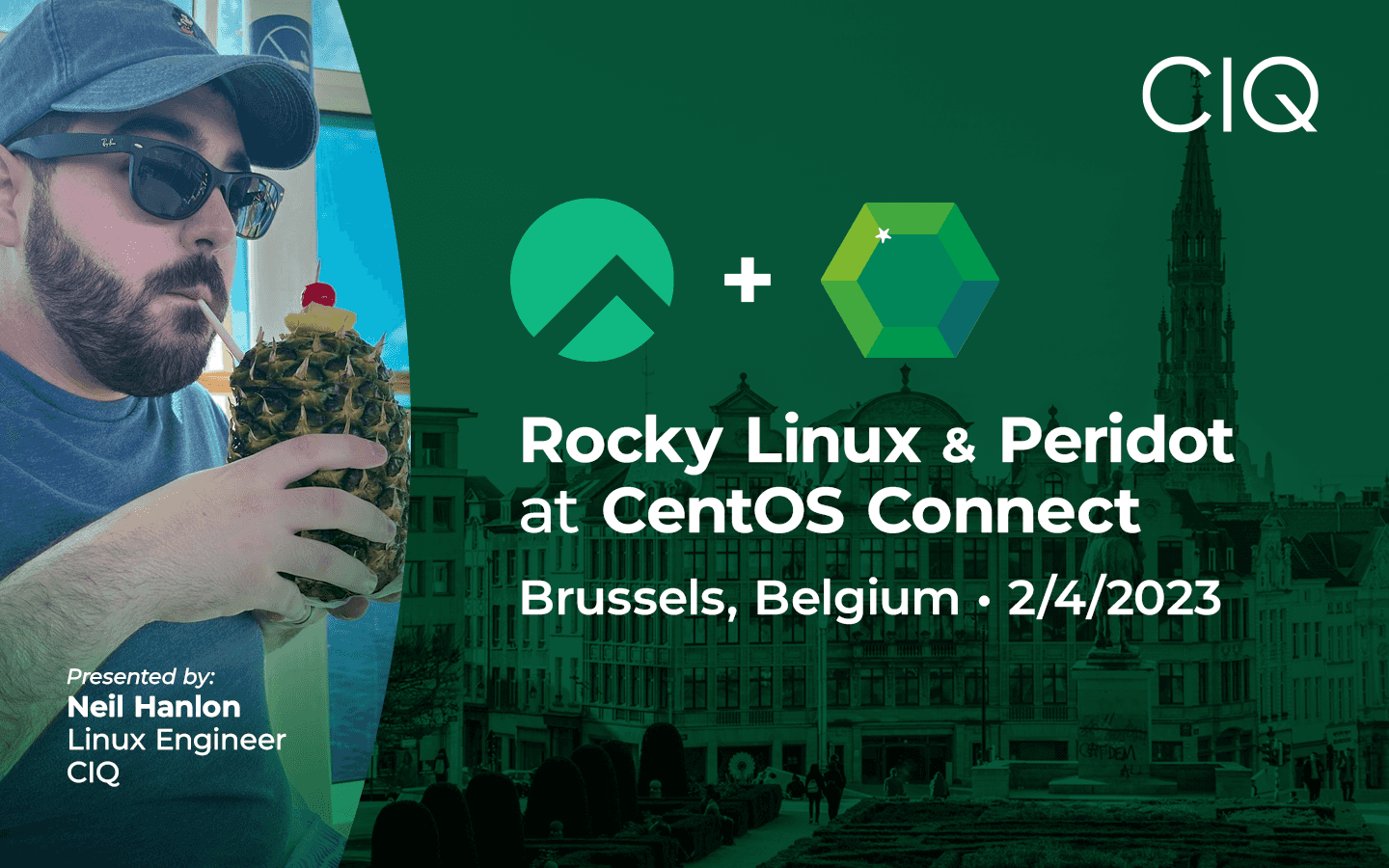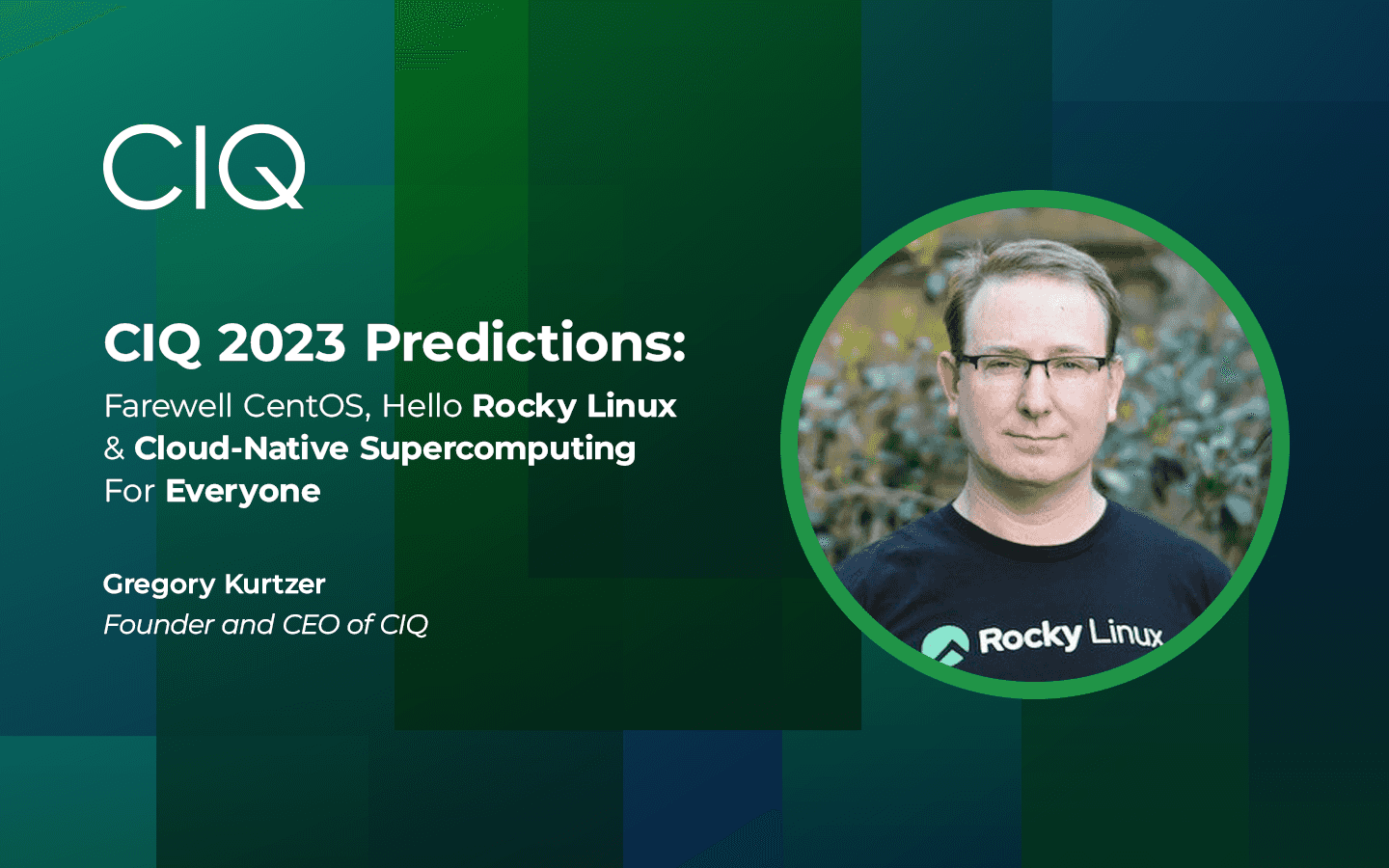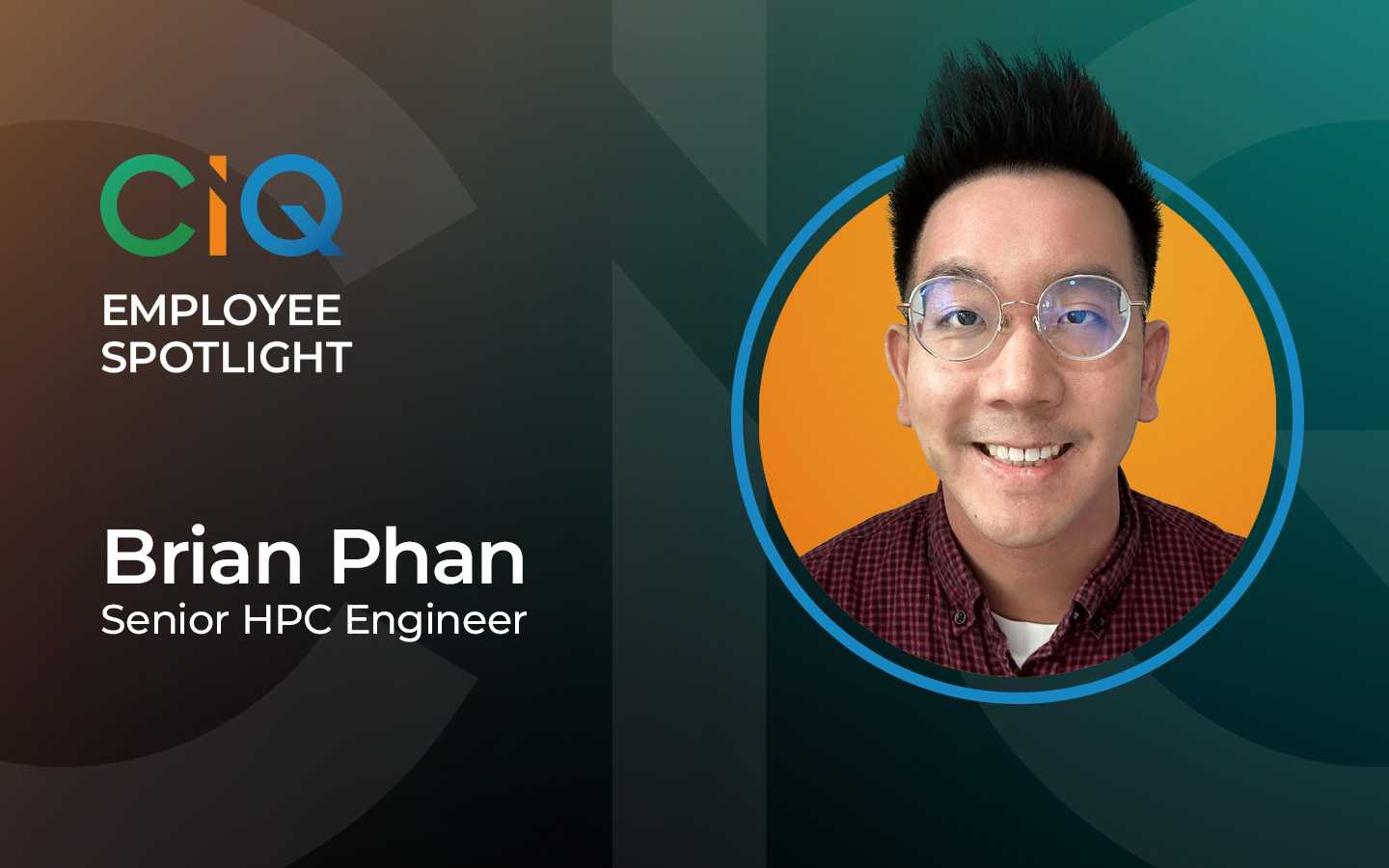6 min read
Why I Joined CIQ: It’s a Rocketship You Don’t Want to Miss
Puff pieces aren’t my thing. When the idea of writing about history, about why I’d joined CIQ came up in a marketing meeting—honestly, my reaction was somewhere between “my reasons are my own” and “who would ever find that interesting?” I mean, seriously, shouldn’t we be building the future?
If you haven’t clicked away—then perhaps it’s a worthy topic to cover, because I wasn’t unhappy at Oracle. I had a great job, my boss was awesome, peers were amazing, my compensation generous, I had an (incredible) team, and a solid career path.
However, something was missing—and like Neo in the Matrix—the answer was all around me and yet just beyond my reach.
Why make a hard shift into a much more difficult role, with a new startup, at significantly reduced compensation, and much higher in overall risk so late in my career? To answer that question, we do need to turn the clock back to the early days of Cloud at Oracle. We need to look back for perspective.
Oracle Cloud Infrastructure was a startup fairy tale; back then it was called Sparta, and was very much a separate thing from The Empire (you know—the old, crusty, $20.00 a share Oracle). It was a startup funded by Uncle Larry—but we were just a gamble, one bet out of many. LJE had better things to do (like racing yachts or other billionaire things), so the Eye of Finance wasn’t so much on us—or our cash burn. Our headquarters were in Seattle, and it was led by an incredible humble genius named Don Johnson—architected by Marc Levy and Clay. It was a true David and Goliath tale—an underdog story; I fell for it hook, line, and sinker. I’m a sucker for a Cause.
Many I knew and respected at Oracle—executives such as Chris Chelliah and Rex Wang—told me I should look at it. That was code for “what I always used to bitch about Oracle not having,” so I went for it and was hired by Kash Ifthikar, a brilliant, driven, Type A executive formerly from Cisco, and a former Microsoft APAC president named James Stanbridge. Kash was all about excellence in execution, demanding results, and providing great ideas—James inspired me to “act as if…” (a reference to Glengarry Glen Ross). He gave the space and air cover, and most importantly, the trust to just go make things happen—and in that empowered and inspirational environment, I rolled out Oracle Cloud Infrastructure across Asia Pacific, setting revenue and consumption records along the way—and developing OCI’s largest customer wins outside the United States. I made many friends there—we were a motley crew that really expressed the spirit of a quote from Biloxi Blues: “One should never underestimate the stimulating value of eccentricity.” Thank you, Neil Simon.
There’s something magical about really truly building something from nothing—that startup mojo. OCI gradually became absorbed into the larger Oracle. Clay got crammed into a suit, Don was on a beach dreaming up the next big move for Oracle (Cerner and Health Care), Larry’s bet on OCI paid off big, Kash is now a big-shot SVP running Oracle Consulting, James is a successful advisor, motivational speaker, and investor, and I’d transitioned to a role leading cybersecurity for Oracle JAPAC. Oracle will continue forward and do great things—but Sparta was history. We formed, we stormed, and we had normed. While I was doing important work, such as the security architecture for the largest IPO in India’s financial history, my soul was wandering; I missed the chaos.
About that time, I reconnected with Greg Kurtzer—who reminds me of Don from Oracle—a similar energy and style. Greg and I had met almost 24 years ago; in the late 90s, Dave LaDuke, Dave Sifry, and I were inspired by the Linux movement. Back in the day, we recognized that Linux and open source represented a fundamentally disruptive sea-change in the software space. It’s why I founded the SF Bay Area (Silicon Valley) Linux Users Group. It’s why “The Daves” and I raised money from top-tier investors such as Kleiner Perkins and Accell—and co-founded a company called Linuxcare—and with this, the Linux services and support industry was born. Greg was one of our first and best new hires. We were ahead of our time.
While we didn’t get lucky enough to cash out—the first .com bust took care of that— it was a formative experience. The reality of the day was that Linux and open source had re-written the computing industry playbook, and things would never be the same. Greg went on to co-found CentOS, the first community-based Enterprise Linux distribution. It was wildly successful, and as the years flew by, it went from an idea hatched back in the Linuxcare days to the most widely deployed Linux operating system in business history—a credible significant threat to RHEL, costing Red Hat billions in lost license revenue. Red Hat, playing the long game, hired several CentOS contributors and intellectual property holders. Then, in December 2020— Red Hat (now part of IBM) and the RHEL team end-of-life’d CentOS. (Technically, they kicked it upstream, but it was no longer a production-ready Enterprise Linux.)
CentOS was mission-critical to many of my larger Oracle customers—and they found themselves with no migration path, no patching, or security update options—CentOS as a stable Linux OS had suddenly been end-of-life’d. In true community fashion, Greg immediately called out his intention to launch Rocky Linux, the next evolution of CentOS, named in memoriam for friend and CentOS co-founder Rocky McGaugh. Greg positioned his company (CIQ) to support it—it became a rocketship. Rocky took off—it was incredible to watch, and it tugged at my heart strings. It took me back.
While my customers loved OCI, they were hesitant to move to Oracle Linux. Open source and community equal trust. Oracle lost trust with Solaris, and change is disruptive to customers. For my large High Performance Computing customers, moving to the cloud was a struggle. They want things to remain the same, have terms that never change, people who understand their use cases, never experience a license audit, and have a secure feeling that a large unexpected bill won’t someday appear. Autonomous Linux and Oracle don’t deliver that vibe. Greg, with the wisdom of CentOS under his belt, formed the Rocky Enterprise Software Foundation, positioning Rocky Linux as the next step in the evolution of freely available enterprise Linux distributions. I was stunned by the simplicity and brilliance of this move.
Open source operating systems like Rocky and the Rocky Enterprise Software Foundation guarantee long-term stability. It champions a robust community of companies and individuals who work together to solve for the common good – and provide a stable Linux operating system of high integrity that will never be beholden to a single person or entity. Something to build the future on.
The startup-guy in me was seeing another sea change in the IT landscape. This was the evolution of the Enterprise HPC movement—observed in large Japanese automotive manufacturers who ran simulations on CentOS; similarly, huge media and telco concerns in Korea and India. These are companies that deployed thousands of cores / servers worth of compute—and consumed huge amounts of storage. At the same time, Greg spent decades in national labs doing large-scale scientific computing, delivering industry-defining HPC tools such as Singularity and Apptainer, all while building massive compute clusters solving for physics. The very same skill sets and background credibility that Enterprise HPC customers really need. This seemed like an opportunity. It called out to the younger, slimmer, and more hopeful version of myself that set out to change the world with Linuxcare.
While staying with Oracle was an option—Greg had made it clear that they could use someone with my battle scars—that I had forgotten more about supporting, servicing, training, and certifying Linux and open source than most people—and other nice things. Honestly, I don’t know if that’s true. However, Graham Weston, the founder and CEO of Rackspace, once wrote, “When we pay attention to what people want from work, everything gets better. What we all want from work is to be valued members of a winning team on an inspiring mission.”
I see the long-term vision of CIQ, and the amazing future their technology product Fuzzball can make real. Especially in the HPC worlds of design, manufacturing, and media. Rocky Linux and the RESF are, without question, “the right thing to do” (which is a reference to an open source true-ism). It’s a concrete platform to build the next generation of incredible capability on. When I think about the future—flying cars, Rosie the Robot, that Great Big Beautiful Tomorrow (promised by GE and Walt Disney at the 1965 World Fair Carousel of Progress)—I see the tech vision of CIQ making much of it possible. No, we’re not designing flying cars or jet packs—but flying cars and jet packs will be AI-designed, modeled, simulated, crash-tested, fusion-tested, piloted, and printed by our software—both planet-side and on Mars.
I’m a simple block and tackle guy—Rocky Linux is, at this moment, the largest and most popular Enterprise Linux available. If you want the best possible support for ANY Enterprise Linux—for any reason, in any industry—connect with us. If you have software or solutions, let’s get them certified on Rocky and work together to make it better. Let’s talk about HPC and Fuzzball. This is a rocketship you don’t want to miss. This is the future! In that sense, tomorrow is indeed “just a dream away” and as such, I’ve found the next inspiring mission—and that’s why I joined CIQ.
Built for Scale. Chosen by the World’s Best.
1.4M+
Rocky Linux instances
Being used world wide
90%
Of fortune 100 companies
Use CIQ supported technologies
250k
Avg. monthly downloads
Rocky Linux



